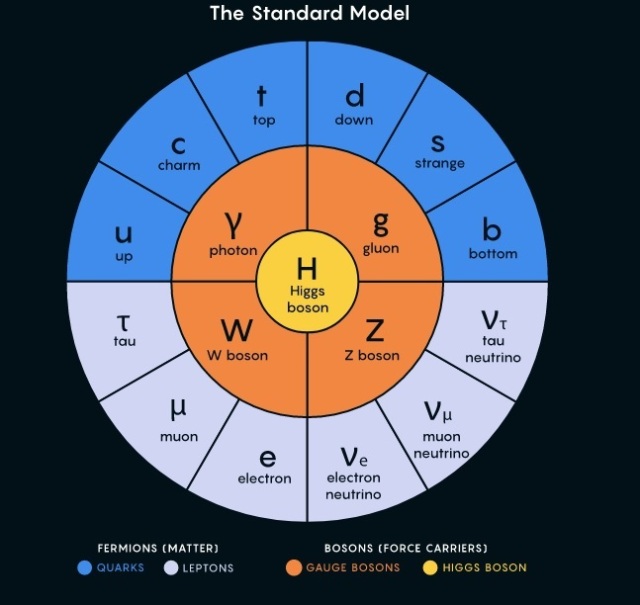Warmizombies open with preaching the assertion, that
Global Warming is settled science, but promptly EVADE all such explanation and AVOID all such science.
Theory. A nonscientific theory. It serves to explain what they perceive as 'valid data'. We both know it's not valid, but to them it is.
They will not define terms and will not clarify the gibberish they spew.
True. Even the term 'global warming' is a meaningless buzzword since it does not specify a starting or ending time of the so-called 'warming'.
This is deliberate non-explanation and is antithetical to supporting an argument, i.e. it is preaching that demands unquestioning acceptance.
This is the fundamentalist nature of this religion, attempting to prove it's True. Like all religions, however, it is based on a nonscientific theory. The term 'climate change' is not based on anything at all, since 'climate' has no value to measure and cannot 'change'. That's just mangling a language in an attempt to rebrand the Church of Global Warming, especially for winter, when things are cold (never mind the summer in the other hemisphere!).
My wording is that religions have a dogma (no connotation implied, just a set of required assumptions, circular or otherwise) that represent personal beliefs and require no rational basis.
Yet each one attempts to explain something.
Warmizombies pull the rug out from under their own religion by declaring that their religion is not a religion, but instead insist that it is science. This garners their religion the logical value of False the moment the scientific method is applied, which is for what warmizombies unwittingly beg when they declare their religion to be science.
A fallacy does NOT necessarily prove any statement False. Fallacy fallacy.
One difference between religion and science that is rarely mentioned is that whereas religions are not subject to any rules about what beliefs their respective dogmas consider "mandatory," science carries the "Occam's Razor" philosophy that an assertion must have a rational basis in order to say that it should/must be accepted. In this case, Occam's Razor says that since no temperature change can be discerned, there is no reason to believe it, or alternatively, all things being equal, not believing that there is any temperature change in the first place is the simplest model, so Occam's Razor cuts that assertion away. One thing warmizombies forget is that the humans of planet earth would be able to discern an earth whose average global equilibrium temperature had increased by 40C, even though we would not be able to measure it. The fact that humans, such as myself, cannot discern any temperature difference, or any ocean level difference*, or any loss of any coral reefs, etc ... precludes any reason to accept the Climate Change assertion or any of its dogma.
Occam's Razor is not a proof. It does not demand an assertion must have a rational basis or that an assertion must be accepted. It is also not science. You are not even using Occam's Razor here.
* - something that I will be adding to the "ways to verify no sea level rise" debunk on Politiplex is the Santa Monica pier, featured prominently in GTA5. It got me thinking. There was an episode of The Rockford Files (1970s) centering on the Santa Monica pier (underside, antagonist dumping bodies at low tide) and it is exactly that way today. It hasn't changed. In fact, the part of the pier up close to the beach hasn't changed discernably since its construction in 1909.
A nice addition to Politiplex.
I require no convincing. Your point is granted.
You are also aware that this is also irrelevant. How a theory comes about is totally immaterial.
It is completely material. No theory forms in a vacuum.
Stefan-Boltzmann came into existence as the result of taking an integral.
No. While it can be, the theory was first developed empirically (by observing materials hot enough to glow, and noting that always happened at the same temperature regardless of the material). The theory is an explanation of this phenomenon and describes how thermal energy is converted into light in the form of a ratio (E=t^4 * how well the material radiates (and absorbs) light * C or a natural constant that serves to convert the relation to our units of measurement).
Yes, it can be obtained by taking an integral, but that came AFTER the theory was developed.
Anything can bring an assertion into existence, and nothing is ever captured in the resulting assertion ... no data, no research, no observations, no explanations, no episodes of the Rockford Files ... nothing.
Anything may inspire a theory. A theory is not a simple assertion.
... and we agree that The Principia is not science. However, if I could direct your attention to said work:
Of course the book provides support for these theorems/assertions, but you wish to include the support/rational basis as part of a theorem, but it isn't. The rational basis can be omitted without losing any of the "proposition." Acceptance of the theorem might suffer, but acceptance of the theorem is not the theorem itself. The rational basis can be altered for clarity and the assertion does not change.
Theory, not theorem. A theorem is not a theory. A theorem is a proof. A theory is not. The etymology of these two words is completely different and they have completely different meanings.
As you often allude, perception is not reality.
I have stated quite the opposite. Reality is not absolute. There is no absolute reality. Reality to you is just as unique to you as your fingerprints. It is different from any else's reality. You are ignoring phenomenology, which defines 'reality' and the reasoning for it's definition.
That said, there are common realities, between people with similar backgrounds and perceptions. One example is the so-called Western Thought, which many people in the United States share due to their common background from Europe.
Feeling that it is hot does not verify Global Warming.
Never said it did. Nevertheless, feeling that is hot can inspire the Theory of Global Warming. Feeling it is hot is not a proof or verification of the Theory of Global Warming, of course. I never said it was.
A human perception of a straight path is ignoring all the other relationships. All lines are curves, but not all curves are straight lines.
Keep your chart paper dry. I won't curl like that.
It's like Einstein was trying to claim that everything is relative. I wonder how that worked out for him.
It is falsifiable, not just potentially. All that is needed are separate inertial frames of reference. This is one case wherein satellites provide the necessary magic. GPS satellites, being timing systems, provide everything necessary to test Relativity. It's how we know that clocks in separate inertial reference frames cannot be synchronized.
It does not prove either the Theory of Special Relativity nor the Theory of General Relativity True.
You would have to first show that that assertion follows from Relativity. I can understand the lack of any absolute zero speed being intuitive, but I don't recall it ever being derived from Relativity.
It wasn't. But Relativity was derived from not having any absolute zero speed. It was also derived from Maxwell's equations being applied to all frames of reference, and the failure of the Michelson and Morley experiment (which wound up falsifying the theory that light traveled in some kind of medium then called the aether.
Nope. The speed of light (in a vacuum) is the same for all observers, irrespective of inerntial frame of reference.
It is the same, but it can
appear to move slower for an observer outside that frame of reference. This is why the Lorentz transformation is central to this theory. By combining frames of reference, it can be seen why light
appears slower in the other frame of reference for either observer. The seeming paradox is resolved. Both frames of reference DO use the same speed of light, and for the observer IN that frame of reference, the speed of light is the same as any other observer in their own frame of reference.
It is why clocks appear slower by an observer in the other frame of reference, but on time for the observer IN that frame of reference.
Getting back to wording, I don't personally care how you package "theories." The important thing is that you are defining your terms, which you are at liberty to do as you see fit. The only point of contention will be rather cosmetic, but will highlight the fact that you and I are using different wording, is when you claim that science somehow explains things, and then either I or someone else points to the science and asks you to point out the explanation in that science. Of course, you will not be able to point to any explanation because there isn't any there, nor is there any data, nor research, nor "studies" nor any other observations ... only an assertion that amounts to a prediction of nature.
I have no problem with explaining what inspired most theories or their history or what the theory itself is explaining.
I could certainly jump onboard with wording to the effect of the rational basis for any science being an explanation for a great many things. Asserting that a force in one direction will result in an equal force in the opposite direction, i.e. F1 = -F2, calls for support (rational basis) that will certainly prove enlightening to whomever is learning it for the first time.
Shoot a cannon, gun, arrow, etc. There is always a reaction. That's a measurable force, just as the force applied to the cannonball, bullet, or arrow is.
None of that explanation, however, can be found in F1 = -F2.
Reversal fallacy. F1 = -F2 does not derive the observation that created this theory.









 You CAN'T represent a scientific theory with an image, picture, or diagram!!!
You CAN'T represent a scientific theory with an image, picture, or diagram!!! 

